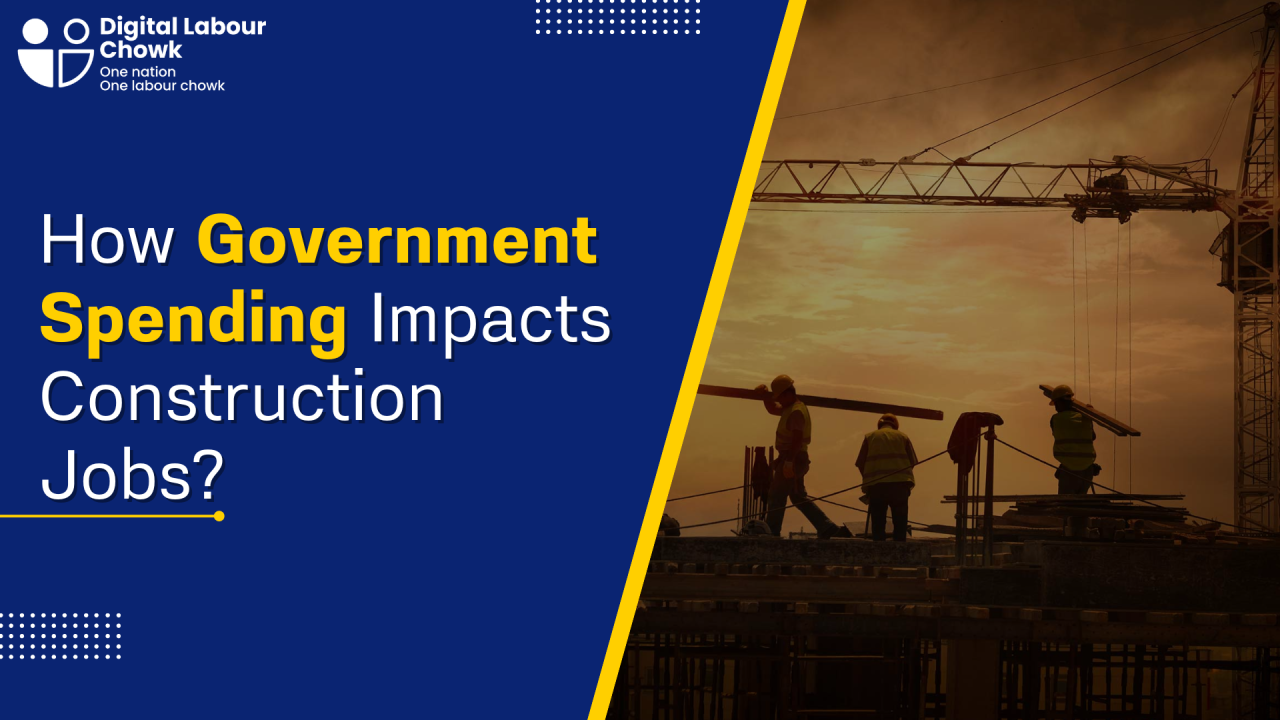
How Government Spending Impacts Construction Jobs?
Digital Labour Chowk
#1 ???????? ???????????? ?????? ???????????????? ???? ??????????
India's construction industry, a behemoth contributing over 8% to its GDP, stands at a crossroads. Government policies, both well-intentioned and occasionally perplexing, play a crucial role in shaping its path. Let's delve into the data to understand how these policies are impacting the sector's growth, employment, and sustainability.
Infrastructure Bonanza: A Double-Edged Sword?
The Modi government's ambitious infrastructure push, with a staggering $1.5 trillion investment plan, paints a rosy picture. The National Infrastructure Pipeline (NIP) promises to create millions of jobs and unlock economic potential. However, the reality isn't so clear-cut. As per KPMG, India faces an alarming infrastructure gap of $1.4 trillion, highlighting the scale of the challenge. Furthermore, bureaucratic hurdles and land acquisition delays often plague projects, leading to cost overruns and project delays.
Affordable Housing: Building Dreams or Bureaucratic Nightmares?
Schemes like Pradhan Mantri Awas Yojana (PMAY) aim to address the housing shortage for millions. The initiative has delivered over 5.2 million houses since its inception. However, access to finances remains a hurdle, with only 27% of beneficiaries availing bank loans, according to a 2023 CAG report. Additionally, stringent environmental regulations can inflate costs, making affordability a concern.
Skilled Workforce: Building Blocks or Missing Bricks?
India faces a significant skilled labor shortage in the construction sector. A 2020 McKinsey report estimates a gap of 45 million workers by 2030. While initiatives like PM Kaushal Vikas Yojana (PMKVY) aim to bridge this gap, industry experts advocate for more sector-specific training programs and better recognition of informal skills.
领英推荐
Sustainable Construction: Green Path or Costly Detour?
Government mandates like GRIHA green building rating system aim to make construction greener. However, a 2022 study by ASSOCHAM revealed that only 7% of Indian buildings are green-certified. High initial costs and lack of incentives remain major roadblocks. Streamlining green building processes and providing financial support could pave the way for a more sustainable future.
Policy Paradox: From Regulatory Overload to Untapped Potential?
Multiple layers of approvals, complex environmental clearances, and cumbersome taxation processes often act as brakes on progress. Streamlining approvals, ensuring transparency, and harmonizing regulations across states could significantly boost efficiency.
A Balancing Act: Optimizing Policy for Growth and Sustainability
While government policies hold immense potential to propel the construction industry forward, a nuanced approach is crucial. Here are some key takeaways:
By effectively addressing these challenges, India can leverage its construction industry not just for economic growth but also for building a more inclusive, sustainable, and resilient future.